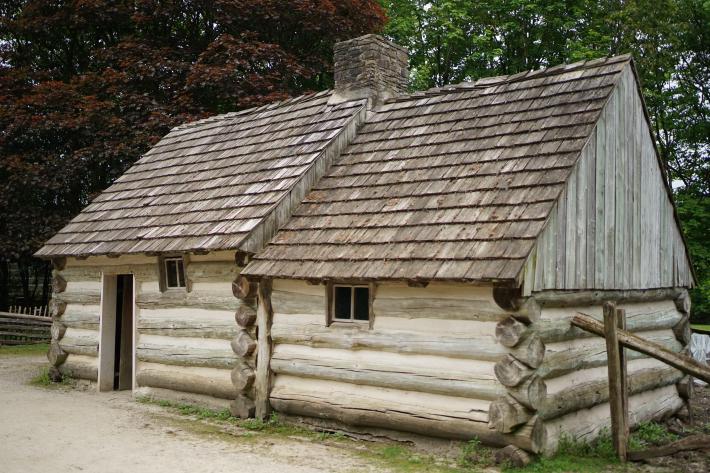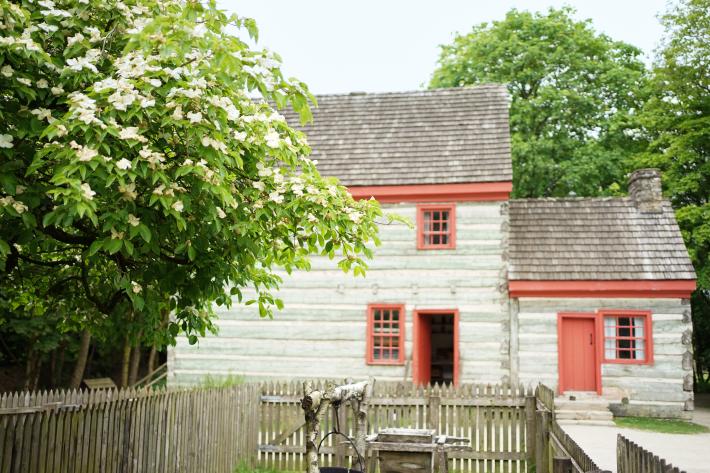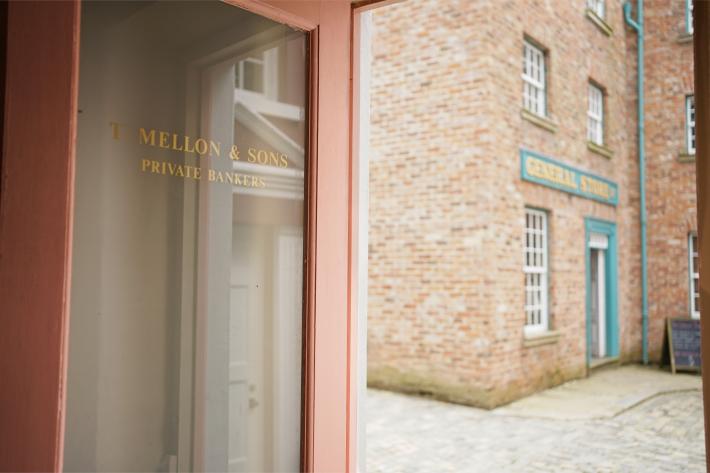
an irish goodbye
Life in Ulster
Thomas Mellon was born on the 3rd February 1813, at Camp Hill Cottage, Lower Castletown, in the parish of Cappagh, Omagh, County Tyrone.
His parents, Andrew and Rebecca Mellon, lived on a farm which had 23 acres and a farm cottage. The small farm was part of Thomas Mellon's grandfather's larger farm, which he cut off and allotted to Thomas' father upon his approaching marriage.

The farm cottage was built on the banks of the River Strule, about half a mile below Cappagh bridge. The cottage was built by Thomas Mellon's father and his uncle Archy, chiefly by the labour of their own hands.
The Mellon Homestead is the foundational building of the Ulster American Folk Park, where it stands today is where the original cottage has always been.
Thomas Mellon wrote an autobiography called Thomas Mellon and His Times, allowing the Ulster American Folk Park a unique insight into what it was like for an Ulster emigrant to move to America.
In his book, we can see how much the landscape of the Mellon Homestead shaped Thomas Mellon, and stayed with him even after decades in America.
It was here I first saw the light, and where I remained till in my fifth year; and what has ever seemed strange to me is the fact that its picture has always remained fresh in my mind, with all its details of location and scenery.
Thomas Mellon
Thomas Mellon and His Times
Life at the Homestead
The Mellon Homestead was built in the shelter of a hill, where the family had a plentiful supply of turf and fresh water. The landscape suggests that this area was a place of settlement, and of ancient habitation.
Thomas Mellon talks of his childhood dog, and how the two of them were best friends. They hunted water rats together in the River Strule, and once the dog saved his life by dragging him out of a ditch filled with water.
Thomas Mellon recounts numerous visits to his grandfather's house, which was a short distance from the Mellon Homestead. Here he remembers the good times he had with all of his aunts and uncles.
The Mellon family were also prosperous farmers. Thomas Mellon refers to their cattle, geese and chickens in his memoir.
Motivation for Migration
Thomas Mellon talks of his grandparents following in the footsteps of those who had emigrated to America. Families would sell their farm and farm stock, while household goods were packed to take along. Female members of the family would travel in the car, their carts with goods would follow, and neighbours, friends and family would walk with them to bid them farewell. Thomas Mellon remarked that this resembled a funeral procession, and they were colloquially called 'American Wakes'.
In Ireland, the wages of labour were low, and there were little opportunities for individuals looking for well-paid employment. It was not possible for a family to live on the ordinary wages of a labourer or mechanic.
Thomas Mellon's family, and his uncle Samuel, were the only members of the Mellon family that remained behind in Ireland. Samuel only remained behind to settle up some business which could not be closed in time to accompany the other family members. He left a few months later.
Thomas Mellon's father began to entertain thoughts of following the family to America. Thomas Mellon reflects on long winter nights spent discussing different parts of America, the products of the land and comparatively better living conditions for emigrants.
Ultimately, they made the decision to follow the family to America, in search of better prospects. The farm was sold and stock was disposed of, resulting in a windfall of two hundred guineas in gold coin, equal to one thousand dollars. Their affairs settled, their emigration journey began.


